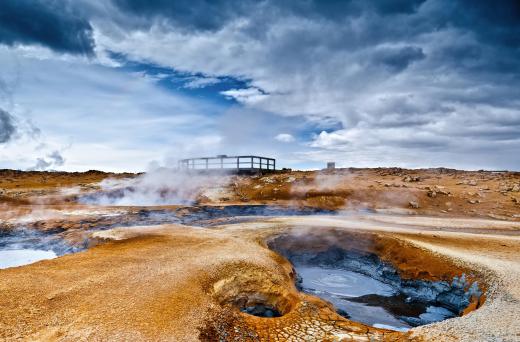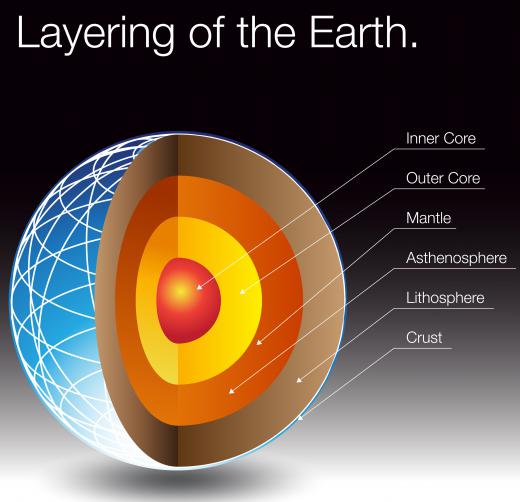What is Geothermal Energy?
 Michael Anissimov
Michael Anissimov
Geothermal energy is energy that emits from the earth. It comes from magma and the radioactive decay of uranium, thorium, and potassium. Magma is hot because of the tremendous amount of friction and pressure to be found in the earth's subsurface area.
While geothermal energy is massive in total, doesn't do too well when compared to the amount of energy we get from the sun, which wins by a factor of about 20,000. Nevertheless, this energy is tapped by over 20 countries, most notably Iceland, which gets 17% of its electricity from geothermal energy. The largest geothermal energy plants output a couple hundred MW (megawatts).

The process of extracting power from the heat in the earth is pretty simple. You pump water through pipes to the source of the heat and let it boil, the stream runs a turbine which gathers power, then the water is recondensed and sent through the cycle again. If we had pipes strong enough and deep enough, we could send them down to the earth's mantle and have a practically inexhaustible source of electricity. But with today's technology, we can only reach pockets of heat that are close to the surface.

Geothermal energy is not a strictly renewable energy source like wind or hydro, because the ground cools down slowly as energy is extracted from it. Nevertheless, it does slowly renew thanks to radioactive heating. It is thought that molten rock at temperatures between 1,200 and 2,200°F (650 to 1,200°C) can be found in pockets 50 to 60 miles (about 80 to 97 km) underneath the earth's surface, just beneath the tectonic plates. This would provide a prodigious source of geothermal energy, but the deepest hole mankind has drilled only extends about 8 miles (13 km) down. As we move towards independence from fossil fuels, geothermal will join solar and nuclear energy in providing clean power to the world's offices, industries, and homes.
AS FEATURED ON:
AS FEATURED ON:














Discussion Comments
Often the boiling pools are the first ways local people used the geothermal energy, for example, cooking in the pools.
But they can also be dangerous, not only as a physical hazard, but also raising the possibility of things like toxic gases.
It's a great way to get energy, as it's almost free once you've established a plant, but it does require caution.
While the geothermal energy might be relatively inexhaustible, the water generally isn't.
The same problem plagues any natural ground water source. There are just too many people and that water is drawn up more quickly than it can be replaced.
If the water disappears there's no way to get at the heat, whether or not it's still down in the ground.
It can also cause other problems. There are towns in the world where too much water has been drawn out leaving the ground unstable and vulnerable to sink holes.
Geothermal as an alternative energy source has its advantages, surely, but it also needs to be carefully managed in order to avoid problems like these.
this article rocks my socks.
The heat cannot be used up because the earth continues to produce heat and doesn't ever stop. I hope that answered your question.
can't the heat or steam be used up eventually, just like fossil fuel?
Probably either California or Iceland. Geothermal accounts for 5% of California's energy, about 25% of Iceland's. Since CA is much larger than Iceland, that probably makes CA the winner, though Iceland has plans to shift 100% of its power to renewable sources such as geothermal. But Iceland has just 1% the population of California.
who is the largest consumer of geothermal energy ?
Post your comments